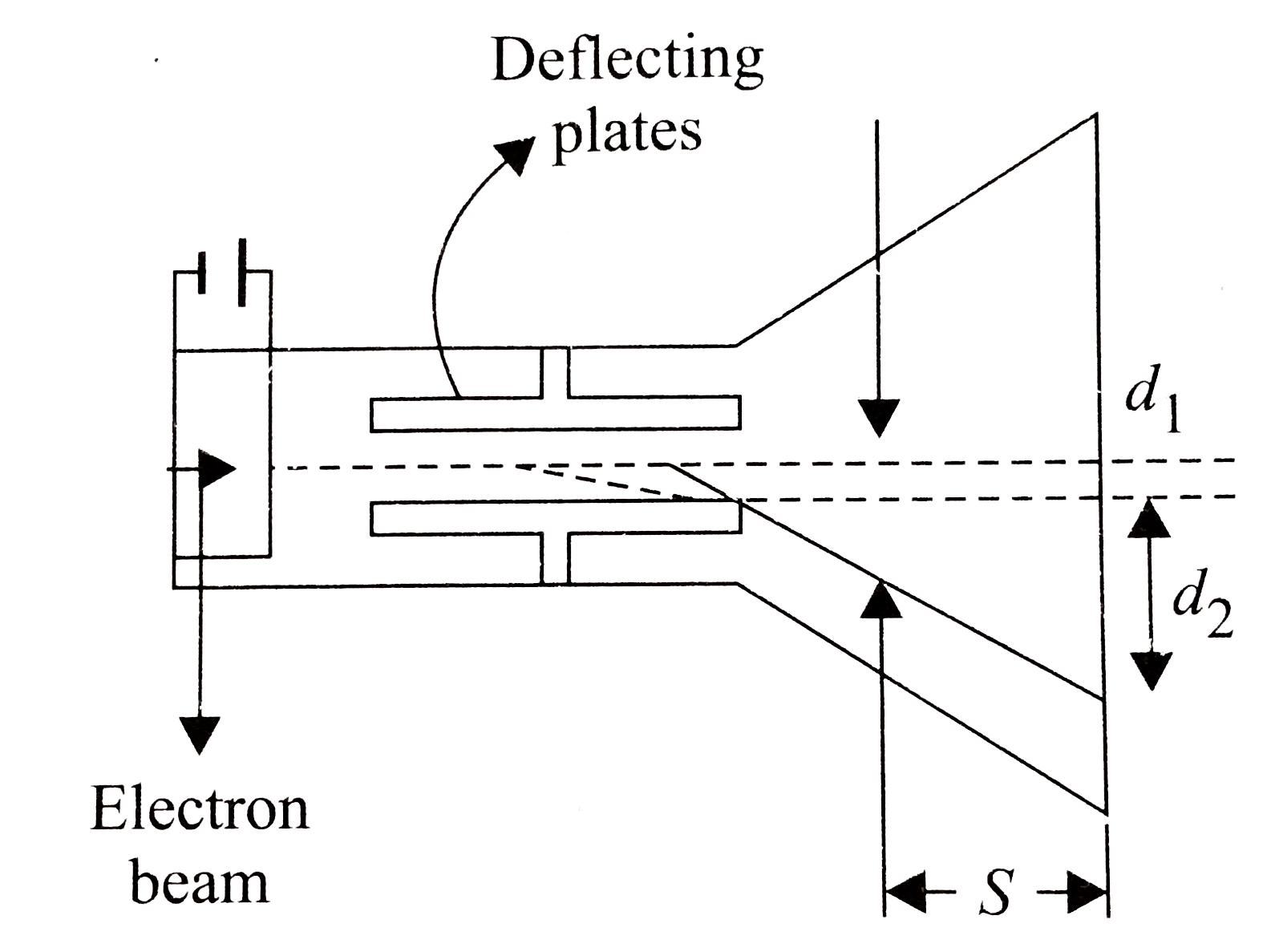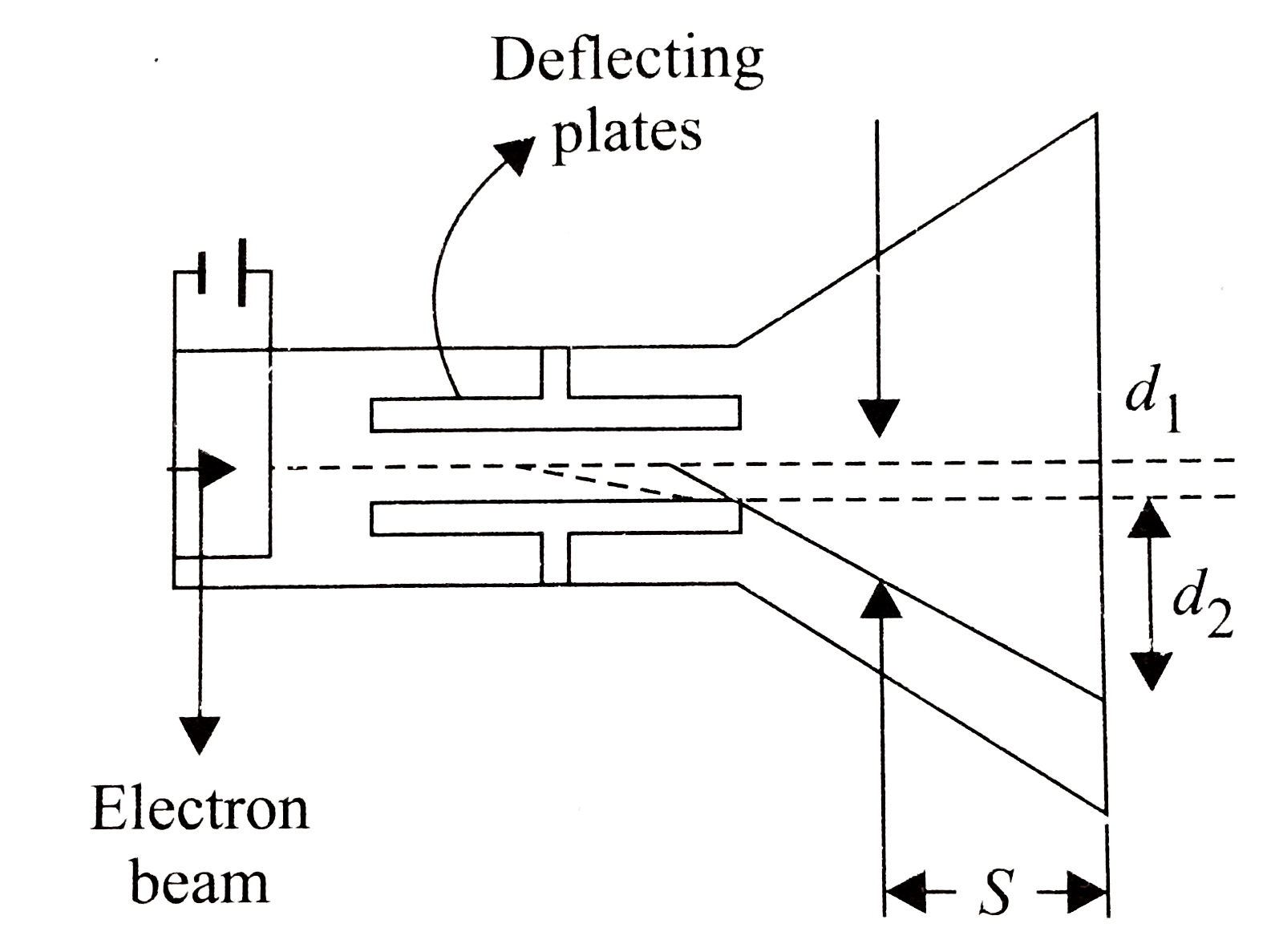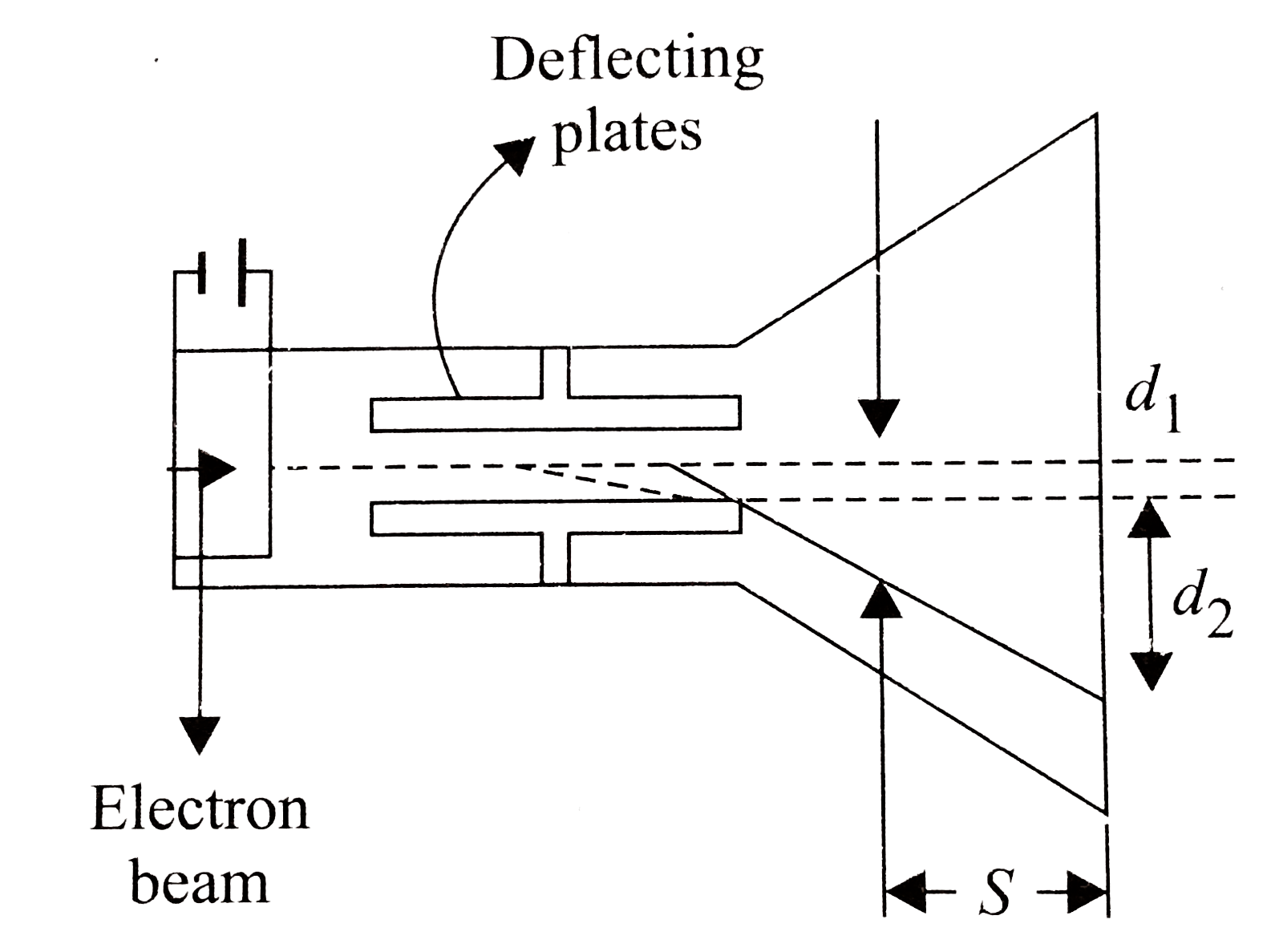Both, the electric and magnetic fields can deflect a moving electron. What is the difference between these deflections?
To understand the difference between the deflections of a moving electron in an electric field and a magnetic field, we can analyze the forces acting on the electron in both scenarios.
1. Understanding the Forces:
- When an electron moves in an electric field, it experiences a force given by F=qE, where q is the charge of the electron and E is the electric field strength.
- In a magnetic field, the force on a moving electron is given by F=q(v×B), where v is the velocity of the electron and B is the magnetic field strength.
2. Direction of Forces:
- In the electric field, if the field is directed upwards and the electron is moving upwards, the force will act in the opposite direction (downwards) because the electron has a negative charge. This force will change the velocity of the electron, causing it to decelerate.
- In the magnetic field, if the magnetic field is perpendicular to the motion of the electron, the force will act perpendicular to both the velocity of the electron and the magnetic field direction, leading to circular motion.
3. Nature of Deflection:
- The deflection in an electric field results in a change in the speed of the electron. As the electron moves, it experiences acceleration or deceleration due to the electric force, which alters its kinetic energy.
- In contrast, the deflection in a magnetic field results in uniform circular motion. The speed of the electron remains constant, but its direction changes continuously. The magnetic force acts as a centripetal force, keeping the electron in circular motion.
4. Effect on Kinetic Energy:
- In an electric field, since the speed of the electron changes, its kinetic energy also changes. The work done by the electric field on the electron results in a change in kinetic energy.
- In a magnetic field, the speed of the electron remains constant, and thus its kinetic energy remains unchanged. The magnetic field does not do work on the electron; it only changes the direction of its velocity.
5. Conclusion:
- The main difference between the deflections caused by electric and magnetic fields is that the electric field changes both the speed and kinetic energy of the electron, while the magnetic field maintains a constant speed and kinetic energy, resulting in circular motion.
- When an electron moves in an electric field, it experiences a force given by F=qE, where q is the charge of the electron and E is the electric field strength.
- In a magnetic field, the force on a moving electron is given by F=q(v×B), where v is the velocity of the electron and B is the magnetic field strength.
- In the electric field, if the field is directed upwards and the electron is moving upwards, the force will act in the opposite direction (downwards) because the electron has a negative charge. This force will change the velocity of the electron, causing it to decelerate.
- In the magnetic field, if the magnetic field is perpendicular to the motion of the electron, the force will act perpendicular to both the velocity of the electron and the magnetic field direction, leading to circular motion.
- The deflection in an electric field results in a change in the speed of the electron. As the electron moves, it experiences acceleration or deceleration due to the electric force, which alters its kinetic energy.
- In contrast, the deflection in a magnetic field results in uniform circular motion. The speed of the electron remains constant, but its direction changes continuously. The magnetic force acts as a centripetal force, keeping the electron in circular motion.
- In an electric field, since the speed of the electron changes, its kinetic energy also changes. The work done by the electric field on the electron results in a change in kinetic energy.
- In a magnetic field, the speed of the electron remains constant, and thus its kinetic energy remains unchanged. The magnetic field does not do work on the electron; it only changes the direction of its velocity.
- The main difference between the deflections caused by electric and magnetic fields is that the electric field changes both the speed and kinetic energy of the electron, while the magnetic field maintains a constant speed and kinetic energy, resulting in circular motion.
Topper's Solved these Questions
- MAGNETIC EFFECT OF CURRENT AND MAGNETISMBook:PRADEEPChapter:MAGNETIC EFFECT OF CURRENT AND MAGNETISMExercise:Conceptual Problems (d)
Explore 2 Videos
- MAGNETIC EFFECT OF CURRENT AND MAGNETISMBook:PRADEEPChapter:MAGNETIC EFFECT OF CURRENT AND MAGNETISMExercise:Very Short Answer Questions (a)
Explore 2 Videos
- ELECTROSTATICSBook:PRADEEPChapter:ELECTROSTATICSExercise:ASSERTION-REASON TYPE QUESTIONS
Explore 2 Videos
- OPTICSBook:PRADEEPChapter:OPTICSExercise:Multiple choice questions
Explore 1 Video
Similar Questions
Knowledge Check
An Electric field can deflect
Aα-particlesBX-raysCNeutronsDγ-raysAn electric field can deflect
AX-raysBγ-raysCα-raysDAll of theseAssertion (A),If electrons travel undefeccted by the electric fieldE and magnetic field B then the velocity of electrons is given by V=eb.
Reason (R): When both electric and magnetic field are applied simultaneously on electron beam. If force due to electric field is equal and opposite to force due to magnetic field then they travel undeflected.AA and R are true and R is the correct explaination of ABA and R are true and Ris not the correct explaination of ACA is true and R is false.DA is false but R is true
A particle initially moving towards south in a vertically downward magnetic field is deflected toward the east. What is the sign of the charge on the particle?
View SolutionWhat is the basic difference between electric and magnetic field lines?
View SolutionFollowing experiment was performed by J.J. Thomson in order to measure ratio of charge e and mass m of electron.

Electrons emitted from a hot filament are accelerated by a potential difference V. As the electrons pass through deflecting plates, they encounter both electric and magnetic fields. the entire region in which electrons leave the plates they enters a field free region that extends to fluorescent screen. The entire region in which electrons travel is evacuated.
Firstly, electric and magnetic fields were made zero and position of undeflected electron beam on the screen was noted. The electric field was turned on and resulting deflection was noted. Deflection is given by d1=eEL22mV2 where L = length of deflecting plate and v = speed of electron.
In second part of experiment, magnetic field was adjusted so as to exactly cancel the electric force leaving the electron beam undeflected. This gives eE = evB. Using expression for d1 we can find out em=2d1EB2L2
If the electron is deflected downward when only electric field is turned on, in what direction do the electric and magnetic fields point in second part of experiment
View SolutionFollowing experiment was performed by J.J. Thomson in order to measure ratio of charge e and mass m of electron.

Electrons emitted from a hot filament are accelerated by a potential difference V. As the electrons pass through deflecting plates, they encounter both electric and magnetic fields. the entire region in which electrons leave the plates they enters a field free region that extends to fluorescent screen. The entire region in which electrons travel is evacuated.
Firstly, electric and magnetic fields were made zero and position of undeflected electron beam on the screen was noted. The electric field was turned on and resulting deflection was noted. Deflection is given by d1=eEL22mV2 where L = length of deflecting plate and v = speed of electron.
In second part of experiment, magnetic field was adjusted so as to exactly cancel the electric force leaving the electron beam undeflected. This gives eE=evB. Using expression for d1 we can find out em=2d1EB2L2
A beam of electron with velocity 3×107ms−1 is deflected 2 mm while passing through 10 cm in an electric field of 1800V/m perpendicular to its path. e/m for electron is
View SolutionFollowing experiment was performed by J.J. Thomson in order to measure ratio of charge e and mass m of electron.

Electrons emitted from a hot filament are accelerated by a potential difference V. As the electrons pass through deflecting plates, they encounter both electric and magnetic fields. the entire region in which electrons leave the plates they enters a field free region that extends to fluorescent screen. The entire region in which electrons travel is evacuated.
Firstly, electric and magnetic fields were made zero and position of undeflected electron beam on the screen was noted. The electric field was turned on and resulting deflection was noted. Deflection is given by d1=eEL22mV2 where L = length of deflecting plate and v = speed of electron.
In second part of experiment, magnetic field was adjusted so as to exactly cancel the electric force leaving the electron beam undeflected. This gives eE=evB. Using expression for d1 we can find out em=2d1EB2L2
If the electron speed were doubled by increasing the potential differece V, which of the following would be true in order to correctly measure e/m
View Solution
